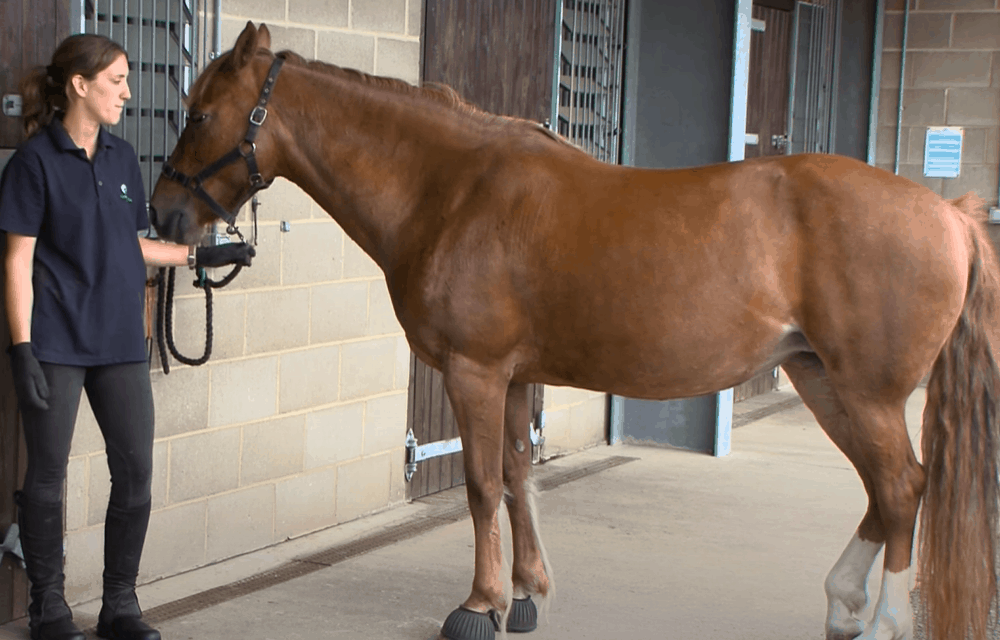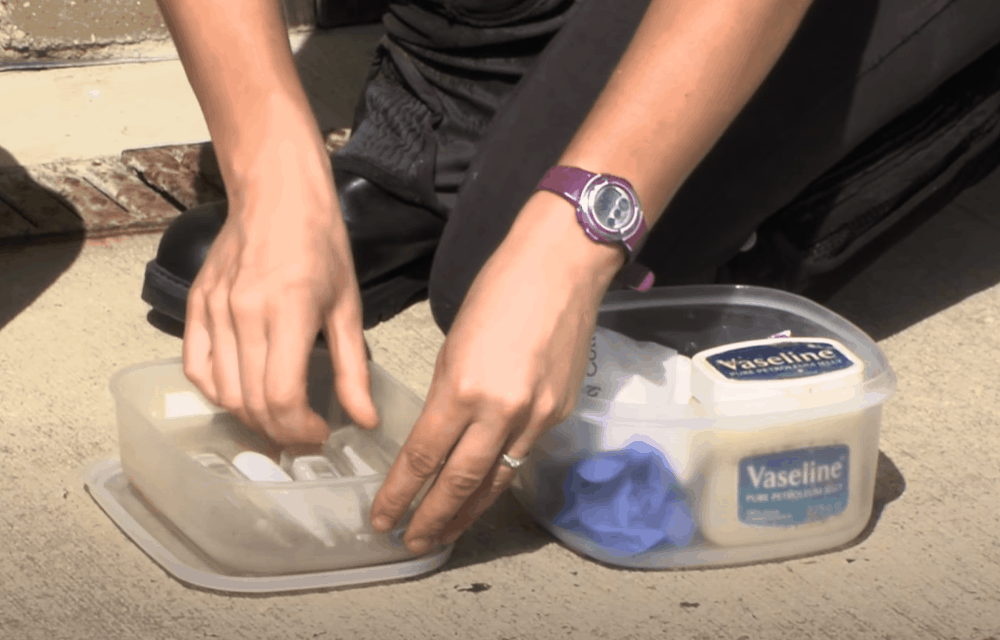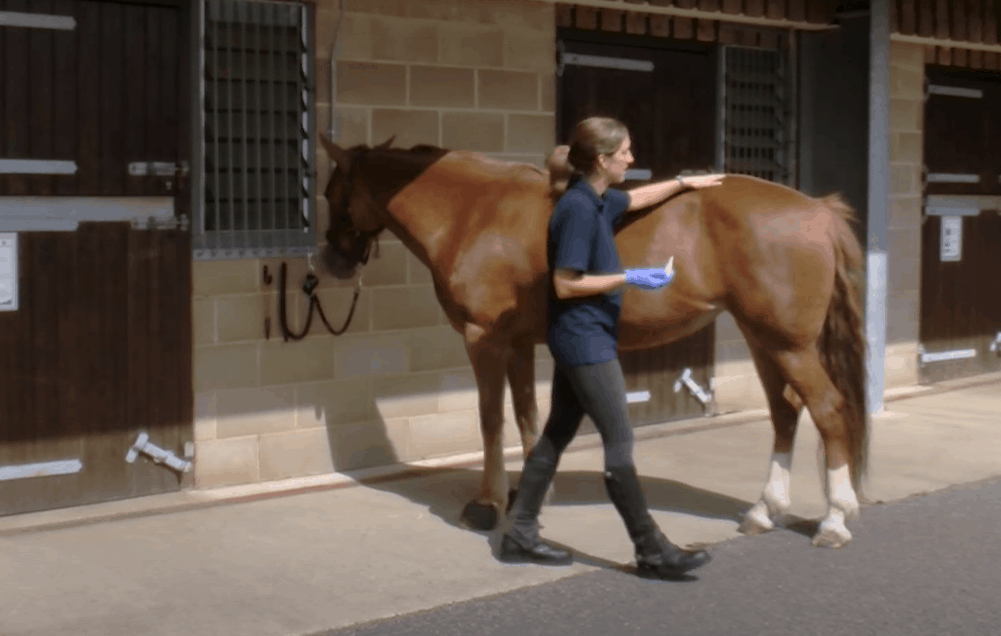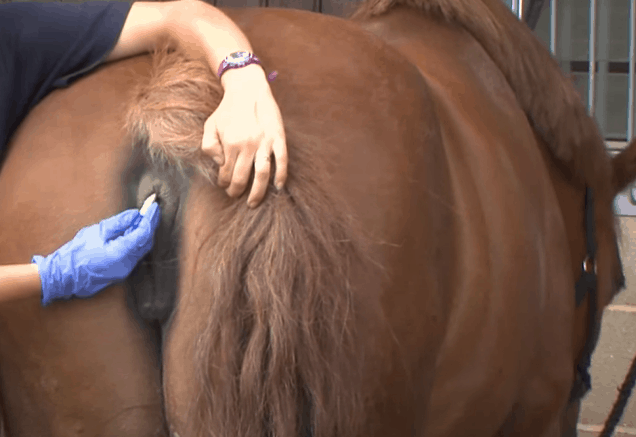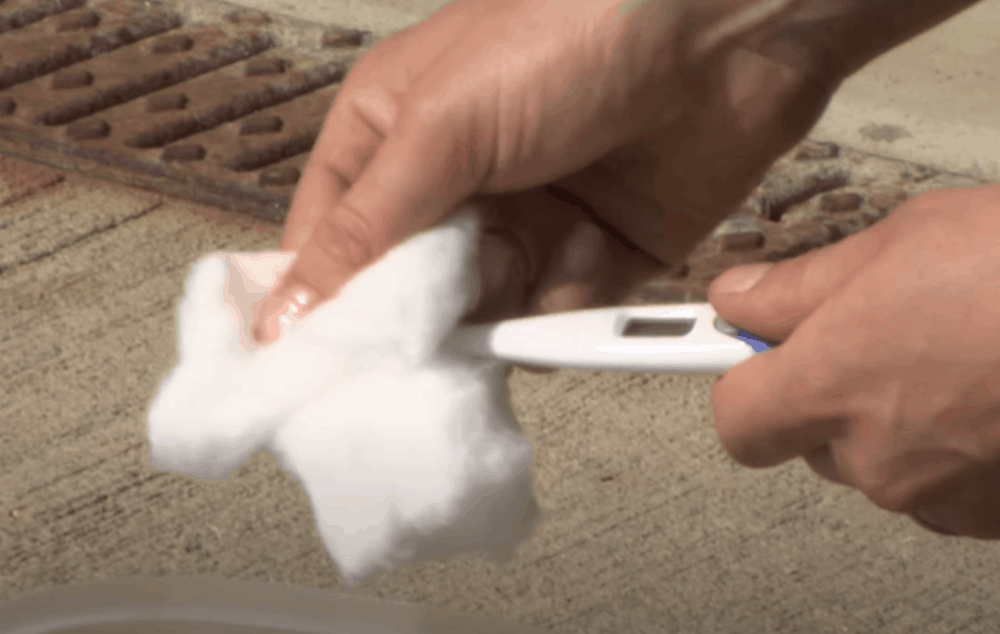Like humans, your horse’s body temperature can tell you a lot about the animal’s health. A temperature too high, for instance, can be a sign of an infection, heatstroke, or another serious condition.
Therefore, as a horse owner, it’s important to know what’s normal for your horse so you can figure out when something is amiss.
To help, we have done comprehensive research on horse temperature and put together this guide that tells you what’s normal and what’s not. We also share tips, on how to properly take your horse’s temperature, that we think could be useful. Let’s get started.
What’s the Normal Temperature of a Horse?
The normal temperature of a healthy, adult horse usually ranges between 99° F and 101.5° F. A healthy foal should have a temperature range of between 99.5° F and 102.1° F. Anything above these levels can be a sign that something is wrong.
The temperature of individual horses may vary and sometimes a horse may register a reading lower than what’s considered normal.
But experts argue that low temperatures should be nothing to worry about. The only time this could be a concern is when you are dealing with a sick horse that is likely to go into circulatory or septic shock. If the animal is healthy, low temperature should really not be a cause for alarm.
However, it is important to note that newborn foals sometimes suffer from hypothermia especially if they are born during the cold season. If your foal’s temperature reads anything below 98° F, make sure to contact a veterinarian immediately.
Equines normally thermoregulate, meaning, the temperature of their body remains constant no matter how much the temperature of the surroundings changes.
Strenuous work or exercise can cause the temperature of your horse to go up by a couple of degrees, but that usually drops back to normal within an hour or so. If the temperature remains high for longer than three hours, the animal may have an underlying illness or may be suffering from equine anhidrosis, where the animal is not able to sweat and cool itself.
How to Take Your Horse’s Temperature (7 Easy Steps)
Taking your horse’s temperature is an easy process that requires very little materials. All you need is a:
- Digital/mercury thermometer
- Vaseline/KY Jelly or any other gentle lubricant
- Tissue/cotton wool
- Rubbing alcohol
- Pair of rubber/latex gloves
Step 1: Wait Until After the Horse Has Passed Stool
Because you will be inserting the thermometer into the horse’s rectum, it’s best to check the animal’s temperature after they have had a bowel movement; it will lower the likelihood that you will push the thermometer into dung.
Stool generally has a higher temperature and will cause the thermometer not to accurately reflect the actual body temperature of the animal.
Step 2: Talk to the Horse
Chances are you are the owner of the horse you are examining and your equine already knows that you want to take their temperature. However, if you are taking the temperature of someone else’s horse or doing this for the first time, you need to interact and familiarize yourself with the horse.
It is also important that the horse gets to know you so they don’t get spooked. You can do things like talking smoothly to the horse, feeding them some treats, or scratching them behind their ears; these simple actions will go a long way in creating that much-needed connection between you and the animal.
As you do this, walk the horse to a post and tie them up securely. This will ensure that they are not moving around too much when you start taking their temperature.
Step 3: Examine Your Thermometer
You can use a digital or mercury thermometer to check your horse’s body temperature. If you’re using a digital one, make sure to switch it on first; it will help you know if it’s working correctly. If the thermometer doesn’t turn on, check if the battery is dead and replace it.
If you are using a mercury thermometer, make sure to shake it a few times so the mercury can return to the bulb. Not doing this can cause the thermometer to give a false reading.
Once you are done inspecting and prepping your thermometer, apply some lubricant to the end that goes into the rectum so it’s not too rough on the horse.
Step 4: Position Yourself for the Job
Stand next to the horse, preferably on the mounting side so they don’t get startled. Then, from this position, walk toward the horse’s behind as you run one hand along their back to maintain their attention.
It’s important to note that horses don’t see directly behind them, so do not stand directly behind them no matter what. Instead, stand beside their rear leg where they can see you. That way, they won’t get spooked and kick out. Horse kicks can cause serious injuries or even kill you.
Step 5: Hold the Horse’s Tail
Gently grip the horse’s tail (at the rump) with one hand and hold the thermometer in the other. Lift the tail sufficiently high so you can access the rectum.
Now, slowly insert the edge of the thermometer into the animal’s anus. While at it, keep talking to the equine. They may not like the sensation but they will surely enjoy a friendly, soothing voice.
If the animal clenches its anal muscles, try rotating the thermometer. It will help push the thermometer past these muscles.
You need the thermometer bulb to be inside the rectum. But don’t push it too deep or it will get ‘swallowed’ into the anus.
Some techniques advise securing the thermometer with a string, and while this may help pull the thermometer back out, if the thermometer goes too deep and swings around 90°, pulling on the thread could damage the animal’s rectum.
As such, the best way to keep the thermometer from slipping inside your horse’s anus is to be careful with how far you push it, not tying a string to it.
Step 6: Read the Temperature
Depending on the type of thermometer you are using, once it’s done reading the horse’s temperature, it will beep (in the case of a digital thermometer) or rise the mercury level (in the case of a mercury thermometer).
The wait can be anywhere between 30 and 120 seconds depending on how long the temperature takes to regulate and become constant.
Next, gently pull the thermometer out of the equine’s anus at the same angle you pushed it in. Keep in mind that horses may pass gas when you remove the thermometer from the rectum, so you may want to cover your nose or hold your breath.
Now, read the temperature and keep a record of it. If the temperature is above normal, wait for a few hours, then repeat the procedure. Take the temperature another two or three times and calculate the average. Sometimes things like dung or delaying thermometer may interfere with the reading.
Step 7: Clean the Thermometer
Turn off or shake down your thermometer, then give it a good rub with a clean tissue or cotton wool soaked in rubbing alcohol. This will clean and disinfect the thermometer. Don’t forget to remove any dung that may be attached to the thermometer.
Factors Affecting Horse Temperature
While the normal temperature of most horses will range between 99° F and 101.5° F, this number may vary slightly based on two major factors:
Weather: When it is too hot or too cold, your horse’s body temperature may go slightly higher or lower. But because equines thermoregulate, the changes in temperature are usually almost negligible. As such, your equine’s temperature should not go any higher than 100.5° F in the winter or 101.5° F in the summer.
Activity: If you take the temperature of your horse right after they have undertaken an intense activity like racing or pulling a heavy load, the reading may be above normal. Some activities can even raise the animal’s temperature up to 105° F. If the horse has no underlying health condition, this temperature should go down in 2 to 3 hours.
When to Contact Your Vet
Any high temperature that doesn’t go down within a few hours should be a call for alarm and you should have your horse evaluated by a veterinarian right away. Your equine should also be checked if they are showing other symptoms like lack of energy, loss of appetite, lack of sleep, etc.
Another instance that may require vet services is when the thermometer accidentally slips into the equine’s rectum. A veterinarian will safely check how deep it is and pull it out without harming the animal.
The Takeaway
Regularly checking your horse’s temperature can help you know when something is wrong and when to call a vet. The good news? You don’t have to pay someone to do this for you.
As long as you have a digital thermometer in your equine care kit, you can effectively keep track of your horse’s core temperature. Just grab the thermometer, insert it into the animal’s anus, and take the reading. Easy as pie.



